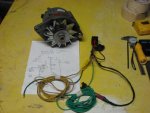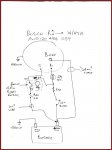generator to alternator conversion.......
Can any of you sparkie froggers enlighten me as to weather I need to change the standard regulator when doing an alternator upgrade from a Renault fitted with an original generator? Any advice would be helpful.
Can any of you sparkie froggers enlighten me as to weather I need to change the standard regulator when doing an alternator upgrade from a Renault fitted with an original generator? Any advice would be helpful.
Last edited:


 Binky.
Binky.
